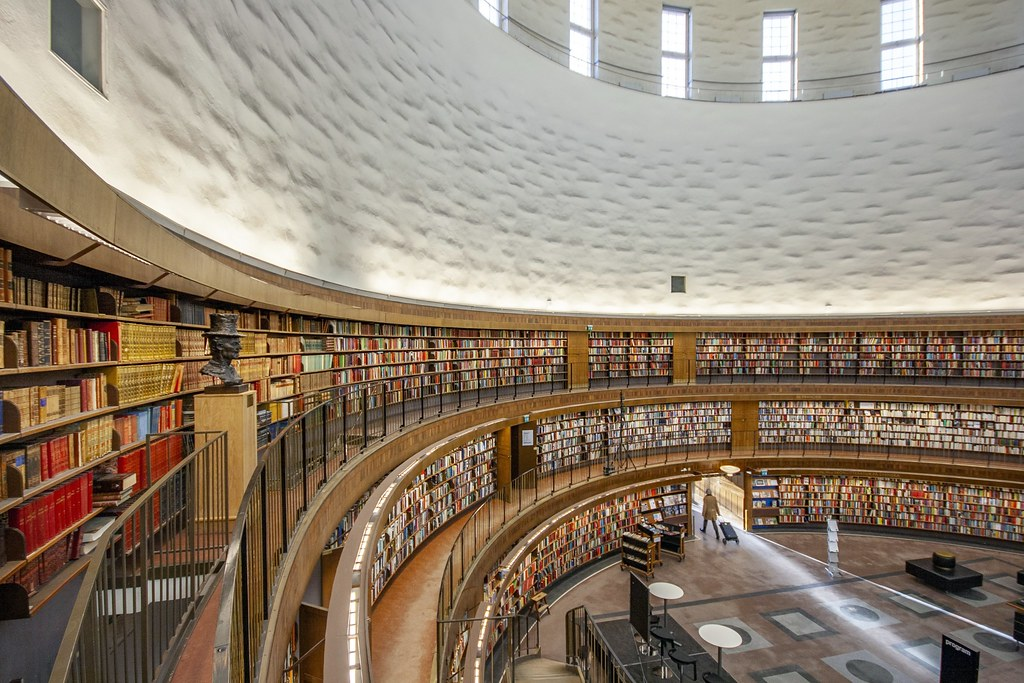What is Scandinavian architecture? 4 defining styles from Sweden, Denmark and Norway
The Scandinavian concept of “hygge” has inspired books, emblazoned pajama sets, and has even been recreated as a scented candle fragrance. But there’s way more to Scandinavian design than cozy socks and an open fire.
Scandinavian architecture is some of the best in the world, thanks to its timeless style and functional, eco-conscious applications.
Here’s everything you need to know about Scandi architecture — from its roots in the Middle Ages to its most distinguishable features.
A (very) brief history of Scandinavian architecture
Scandinavia has a long history. So it’s no surprise that Scandi architecture has roots going all the way back to the Iron Age.
King Harald Bluetooth — who ruled over Denmark and parts of Sweden in the 900s — notably built fortresses, churches, and settlements that became cities we know and love. But, of course, his style wasn’t exactly what we recognize as Scandi today!
Interestingly enough, there wasn’t much to distinguish Scandinavian architecture from the rest of Western Europe right up until the 20th century. The key tenets of Scandinavian architecture emerged around this time out of function and necessity — and that ethos is still reflected in its distinctive style today.
20th and 21st-century Scandinavian buildings are built with their unique climate in mind. In winter, there are only a few hours of sunlight a day, so maximizing natural light is key. Scandi architects also build not only to withstand the elements but to embrace nature in a respectful way.
Modern Scandinavian architecture as we know it
Scandinavian architects began looking outside the box in the 1900s, away from more traditional European buildings. Technological advancements meant they could experiment with materials and techniques, drawing inspiration from architectural movements worldwide.
For several decades in the mid-20th century, Scandi architecture was dominated by the Functionalism style, born out of Sweden. It was minimalist and function-driven, but Scandinavian architects managed to bring elegance and beauty to these buildings — qualities that made them stand out globally.
Today, Scandinavian architecture remains modern and innovative — built with harsh climates and environmental sustainability in mind, without compromising on artistic flair and design.
This connection between form and environment echoes in other modern designs, like the mirrored OOD Houses in Tuscany, where architecture reflects the landscape around it.
The classic looks and features of Scandinavian architecture
Natural light
In places where winter daylight sometimes only lasts for a couple of hours, architects fully embrace natural light. Modern Scandi designs feature huge windows and skylights, translucent walls, and even glass roofs. Light-colored interior materials help reflect what daylight there is — creating brighter, calmer spaces.
Comfort
The harsh winter climate means Scandinavians spend a lot of time indoors, leading to an appreciation of comfort and warmth (there’s that hygge influence again). Many homes include built-in nooks or window seats designed for quiet moments — functional and inviting.
Energy efficiency
Scandi designs are known for their environmental focus and energy efficiency. What began as a necessity has evolved into a core design principle. Buildings are designed consciously to minimize their carbon footprint and use sustainable materials.
Clean and simple
The Scandinavian aesthetic is minimalist but expressive — clean lines, simple forms, and organic curves inspired by nature.
4 beautiful examples of Scandinavian architecture
There are amazing examples of Scandi architecture all through northern Europe and the rest of the world. Here are just some of our favorites:
Stockholm City Hall and Stockholm Public Library are two beloved buildings, built in the 1920s, that embody the Swedish Grace style that was emerging at the time. You can see that they’re built with function in mind, but bring in stylish elements for an organic edge — like the library’s curved reading room (above).
The Strömkajen Ferry Terminal, built in 2013, is an astounding feat of Scandi architecture. It’s an undeniably contemporary structure, but incorporates a copper-zinc-alloy called tombac which helps it fit in nicely with the historic waterfront surroundings.
A striking mirrored cube suspended in the trees, designed to disappear into nature — an eco-conscious design approach that resonates with the values behind Donna Carmela Resort in Sicily, where architecture and landscape coexist beautifully.
The Sydney Opera House is one of the best-known Danish architectural exports, designed in the 1970s by Jørn Utzon. It’s said he was inspired by arranging orange segments to get the iconic building shape that’s recognized around the world.
Scandi influence beyond Scandinavia
While Scandinavia’s climate shapes its design philosophy, the aesthetic translates beautifully worldwide. The clean lines, sustainable focus, and thoughtful simplicity can be found in architecture from California to coastal Italy.
For more travel and design stories that connect architecture with place:




